
GNSS for mass markets reduces costs and expands the possibilities for new applications. On this afternoon, a number of new applications of centimeter-accurate GNSS applications will be presented by suppliers and users in the field. In collaboration with the GIN, NIN, HSB and NCG.
You can register for this event via this link.
Chairman of the day: Jean-Paul Henry
13:00 Walk-in and registration
13:30 New GNSS applications in Hydrography, Hans Visser, Fugro
A brief overview of current and future GNSS systems is followed by new GNSS applications within hydrography. With focus on fast update rate up to 100 Hz and applications for autonomous vehicles.
14:00 Robots in the Agricultural Sector, Utility/Necessity GNSS in Agriculture, Bram Veldhuisen, WUR
Driving straight, Location-specific working, Robots (and drones), Capturing data, GNSS challenges
14:30 Troposphere (water vapor) treasures with affordable receivers, Siebren den Haan / Andreas Krietemeyer, KNMI
Recent research has shown the good performance of cost efficient dual frequency receivers. But for a completely cost-effective setup, cost-efficient antennas are also necessary. Due to the unknown phase pattern of these antennas, this is a limiting factor for estimating high quality Zenith Troposphere Delay (ZTD). By relative antenna calibration on different antenna types ranging from cost efficient to geodetic quality we can show ZTD and position results which are useful for meteorology and for deformation monitoring
15:00 Break
15:30 IOT in geodesy, monitoring of settlement beacons, Eltjo Keijer, Basetime.xyz
Basetime delivers precise, reliable and securely collected data at any time, fully autonomously, using “low-cost” GNSS sensors. This unburdens the client by taking the entire monitoring of assets off your hands and delivering data specifically tailored to your wishes in a dashboard of a specialist. Last summer, Basetime launched a product (Locator One) that can be used to perform automatic point-of-point measurements. In addition to carrying out point level measurements, the water level and quay walls, sheet piling and objects around the track can also be monitored, for example.
Eltjo Keijer has been involved in the development of the Locator One and related software from the start. He will take you along the path an originally geodetic consultancy has taken to eventually arrive at this product. This journey not only had successes…
16:00 Successor SuperGPS / Signals of Opportunity, Christian Tiberius , TU Delft
Today, our society is highly dependent on the GNSS system, such as GPS, for positioning and navigation, as well as for the distribution of time and frequency reference signals. GPS has a great track record and high economic value, but at the same time, like other GNSS, GPS has some limitations.
Therefore, a terrestrial PNT prototype system, SuperGPS, is proposed and tested with an atomic time reference distributed over a fiber optic network. The base stations transmit a wireless signal that can achieve an accuracy of 1-dm in an urban multipath environment. Its scalability and compatibility with existing technology paves the way for a GNSS independent time and location backup system with improved coverage and performance.
16:30 Newest generation of sensorsfor topsport, Niels van der Linden, "Johan Sports" / Demcon
JOHAN guides sports teams with an accurate GPS sports tracker. Improving the physical performance of players and preventing injuries. We serve a wide variety of sports teams ranging from amateur to elite level. At JOHAN, our goal is to make GPS technology easy for coaches at all levels and affordable for all sports teams.
The JOHAN GPS sports tracker is equipped with a GNSS sensor, which, in combination with GPS ground stations, offers high GPS measurement accuracy for tracking player movements during training and matches. Our easy-to-use online platform helps coaches understand how to interpret this type of player performance data and optimize their training programs.
Niels van der Linden (CTO at JOHAN) has been closely involved in the founding and development of JOHAN from the start and will talk about why GPS tracking is now fully accepted in football while it was not the case 10 years ago. In addition, the bottlenecks, blunders, pitfalls and successes during the process are discussed where we are now and where we want to go.
17:00 Afterwards a snack and drink